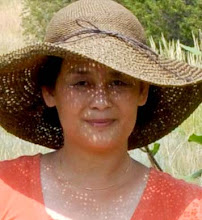My habit started to dictate me, thinking and painting. When I think I’d like to think of patterns. When I paint I’d like to paint what I am thinking.
Out of Box Thinking: Being a foreigner, I could not fit in the box to taste all joys or frustrations on the same wave with others. I realized the gap as soon as I touched down on this large continent North America from Asia on January 20, 1988.
Before I came to US, I had been forced to think and act or react like everyone else as screw nails in a gigantic machine without breaking any rules witch controlled our thoughts and behaviors.
Any disadvantage could be a unique value as advantage. It was a painful change at the beginning to be a stranger with people in America. Out of the box thinking became a natural gift for me - an outsider, in my new life.
I lower my expectations of being “same”, so, that reduced pressures affectively. I gained time and space to focus on the targets I aimed. I don’t react. I don’t need to be sensitive to any perception of being eight good or bad, winner or loser, rabbit or turtle. I don’t even need to be trained as thick-skinned person. But I do care to improve myself by adopting qualities and receiving values that I desire.
Still, I am alert to pattern recognition in imaginations like seeing shining light in the darkness. Still, as screw nails, I perform either leader or follower in large collaboration without showing “me”.
Point of View: I use terms in my own way. Sometimes, I “missed” the point completely but end up with a “new” point of view. Sometimes, I “missed” the point by misusing words, e.g. destruction vs. disruption.
I also realize that my mind has been filled up with two different cultures: Eastern and Western. Sometimes, there is no right or wrong answer, just a different angle of view.
In addition, my mind likes to produce pictures that make my thinking into tripled concurrent processes with Chinese, English, and images. Sometimes, when I answer questions I was embarrassed with people’s shock or confusion. My mind was so busy in sorting out the answers therefore I forgot the audiences totally. Many times, I responded as soon as the first answer pop up no matter it was Chinese, English, or picture.
I am learning English as 2nd language step by step and day by day. At work, my “Chingish” has been already adopted as “extended English”. Thanks for those people around me, who have tolerated my creativities in language for so many years. Many of my co-workers are my English teachers or American culture coachers.
When I was on the AirTran, my mind was filled up with many drafted points as usual. Suddenly all the floating points disappeared but this one – a point of view for three 8s, survived. In Chinese, 8 sounds like ba. Father also sounds like ba.
Point of Departure: My mind continued to travel further from the starting point of 888 and reached a stage with 3 decomposed elements: 8 images, 8 colors, and 8 composition templates.
Many years ago, an American industrial designer his Chinese name is 大富翁) explained me a point of view for art creation. He mentioned a term, point of departure. I couldn’t understand its real meaning at that time.
A while ago, I searched the term via Google and got the answer: the place where something begins, where it springs into being.
The term was still a mystery to me until I finished the whole thinking process for a painting project on that AirTran. I would like to explore visualization with varieties to an extremely limited end within a given condition. Each painting looks same but has uniqueness based on a change pattern. Each painting must be an individual artwork.
The result of this project would reflect our life that is full of unpredictable changes. If we could see the change pattern behind the change surfaces then we could build up a thinking process to adjust us with realistic expectation in each situation.
I started to understand the term, point of departure. 888 was an original point of view from where a painting project was launched with 64 individual artworks into being via a special and unique thinking process.
(to be continued)
















